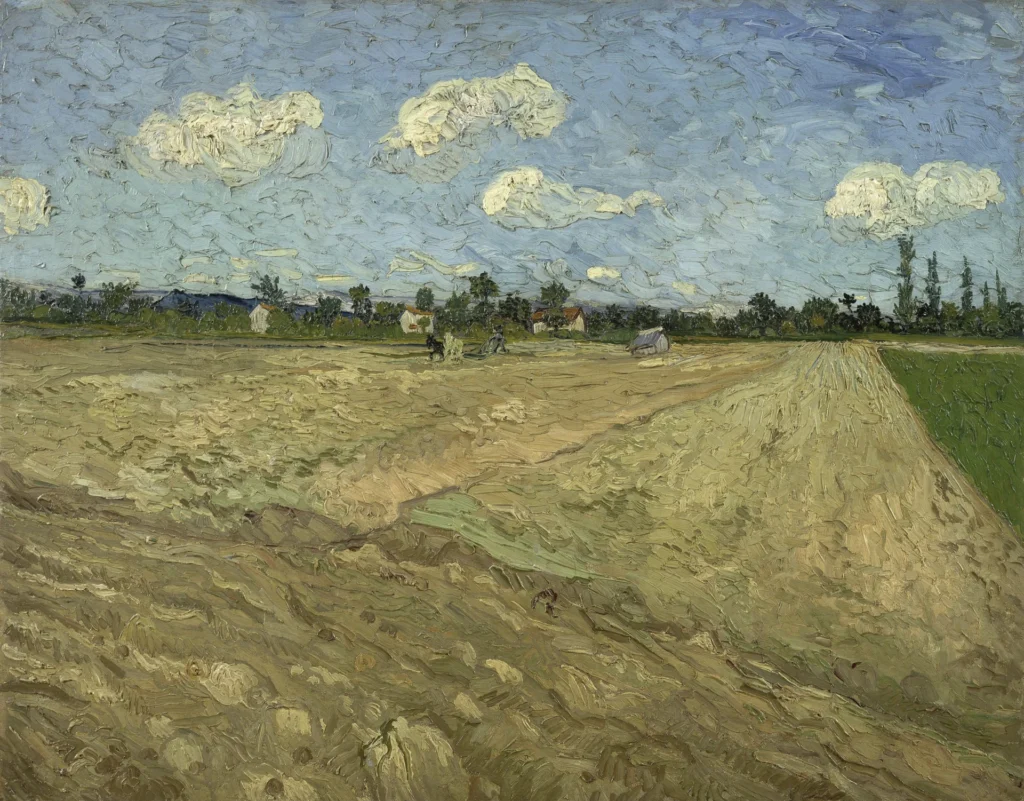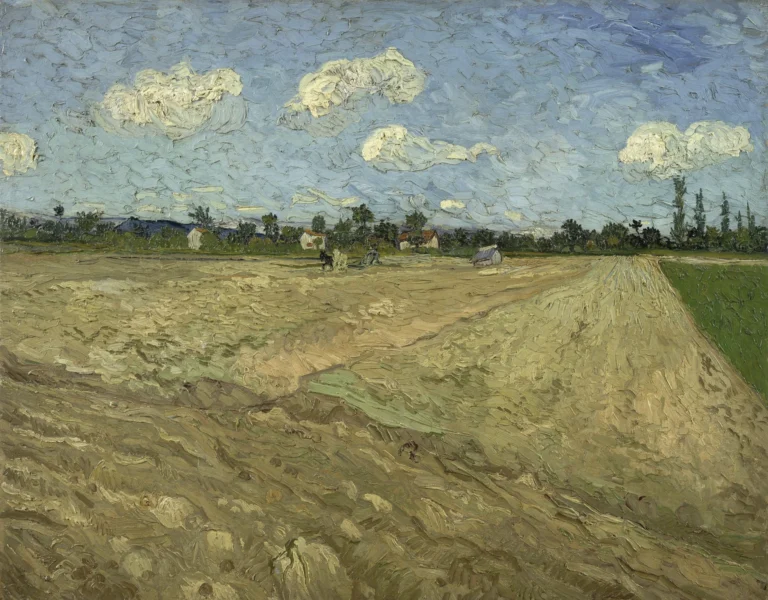Geploegde Akkers (De Voren)
Geploegde Akkers (De Voren) is a vibrant portrayal of ploughed fields by Vincent van Gogh, painted in October 1889 during his stay at the asylum of Saint-Paul-de-Mausole. This artwork showcases Van Gogh's signature bold brushstrokes and rich colors, reflecting a deep appreciation for rural life and the beauty of the farming landscape. Despite his personal struggles, Van Gogh’s ability to capture the essence of nature shines through in this remarkable piece.
October 1889
About the Artwork
This artwork was created during a particularly tumultuous time in Van Gogh's life when he was seeking refuge in the asylum of Saint-Rémy. The tranquility of the surrounding landscape provided a stark contrast to the turbulence of his mind. 'Geploegde Akkers (De Voren)' is not only an expression of beauty but also of Van Gogh's resilience as he transformed his environment into a canvas of hope, showcasing the power of nature in healing and inspiration.
Did You Know
Liked what you see? Add it to your collection.
Enjoyed reading? Share it.
... continued
Creation and Period
The painting was created in October 1889, during Van Gogh's stay at the asylum of Saint-Paul-de-Mausole in Saint-Rémy, a period marked by significant artistic productivity despite his mental health struggles.
Style and Theme
The painting features Van Gogh's characteristic post-Impressionist style, with bold brushstrokes and vibrant colors. It depicts a landscape of ploughed fields, emphasizing the natural beauty and the labor involved in farming.
Significance
'Geploegde Akkers (De Voren)' is considered one of Van Gogh's notable works from his time at the asylum. It reflects his continued focus on capturing the essence of rural life and the natural world, even during a challenging period in his life.










